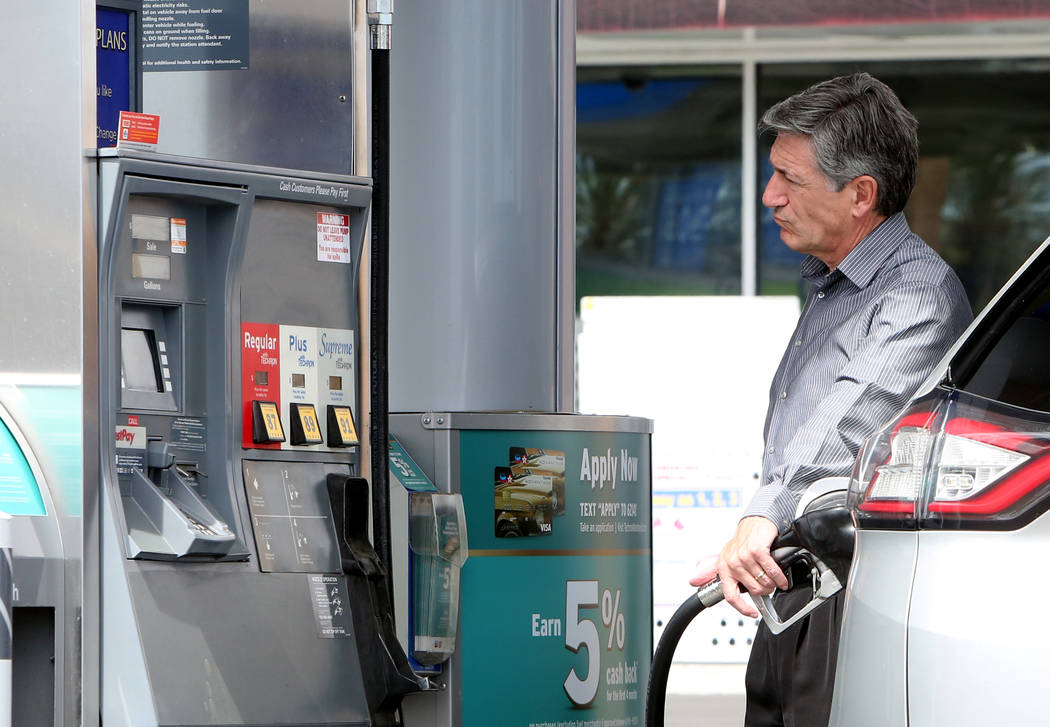
At $2.81, the national gas price average is 45 cents more expensive than a year ago, AAA said this week.
Nevada ranks in the Top 10 on two lists: most expensive markets and largest yearly increases.
The average price in Nevada is $3.25.
Prices in Pahrump as of Monday ranged from $2.87 to $2.93, according to gasbuddy.com
With the unofficial kick-off to summer just weeks away, prices nationally are expected to increase, but a tapering trend may be emerging, AAA said Monday.
“If this past week’s moderate increases are any indicator of what’s to come, the fast rate at which gas prices were increasing may be slowing down,” said Jeanette Casselano, AAA spokeswoman.
“On the week, the national average held steady and 19 state averages remained flat or saw decreases in gas prices. Despite this stability, drivers on the West Coast and in Idaho, Utah and Pennsylvania are paying $3 a gallon,” Casselano said.
The nation’s top 10 most expensive markets are: California ($3.63), Hawaii ($3.63), Washington ($3.32), Alaska ($3.28), Nevada ($3.25), Oregon ($3.23), Idaho ($3.11), Utah ($3.09), Pennsylvania ($3.02) and Connecticut ($2.98).
The nation’s top 10 states with the largest yearly increases are: Indiana (+66 cents), California (+66 cents), Utah (+63 cents), Arizona (+60 cents), Hawaii (+56 cents), Idaho (+55 cents), Nevada (+55 cents), Illinois (+52 cents), New Jersey (+51 cents) and Michigan (+51 cents).
Pump prices in the West Coast region are among the highest in the nation: Hawaii ($3.63), California ($3.63), Washington ($3.32), Alaska ($3.28), Nevada ($3.25), Oregon ($3.23) and Arizona ($2.90).
On the week, prices in the region have all increased. Arizona (+5 cents) saw the biggest leap, while Hawaii and Nevada saw the smallest increases at two cents each.
After a steady decline over the past month, gasoline stocks in the region grew during the week ending on April 27, according to the Energy Information Administration.
Domestic crude production will likely see continued growth through 2018 – supported by a steady increase in active oil rigs.
Baker Hughes Inc. reported that last week, the U.S. added nine rigs, placing the total at 834. The total rig count is now 131 more than the figure at the same time last year.